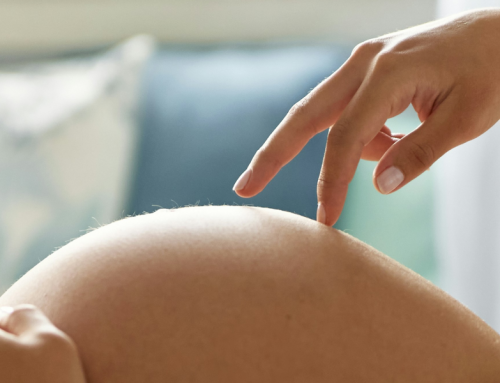Ectopic pregnancy occurs when a fertilised egg attaches to a part of the body other than the uterine lining (hence it is also called an extrauterine pregnancy), usually in the fallopian tube, but less commonly it can also arise in other parts of the body such as the ovary, cervix or abdominal cavity.
Normal pregnancies develop inside the uterus, after a fertilised egg travels through the fallopian tube and attaches to the uterine lining. If we refer to an ectopic pregnancy, however, it must be terminated, so in the next section we will look at the different types of treatment that exist to do so, as well as the different symptoms and ways to know if we are dealing with such a case.
Types of ectopic pregnancy
Before going into the types of ectopic pregnancy, it is useful to differentiate between tubal and non-tubal pregnancies. In the case of tubal pregnancies, we refer to those that occur in the fallopian tube, while non-tubal pregnancies occur in other parts of the body and are less frequent. Finally, we make a third differentiation when talking about heterotopic pregnancy, due to its particularities within our classification.
Tubal shapes
In 98% of cases, ectopic pregnancy occurs in the fallopian tube, which is the structure that connects the ovaries to the uterus and is divided into 4 regions: uterus, isthmus, ampulla and infundibulum.
Depending on the site within the fallopian tube where the fertilised egg nests, ectopic pregnancy is known by different names.
- Ampullary ectopic pregnancy: this is the most common location in which it is usually found (78%), as nidation at this site causes inflammation and obstruction of the tube.
- Isthmic ectopic pregnancy: more rarely (12%) an ectopic pregnancy can be found in the tubal isthmus, which is the constricted area of the uterine tube that connects to the upper and lateral wall of the uterus.
- Infundibular ectopic pregnancy: in 5% of cases it can become lodged in the infundibulum, the area at the end of the tube surrounding the ovary that has a shape similar to an open hand, called the fimbria.
- Intramural or interstitial ectopic pregnancy: this is rare (2%), but nidation may develop in the myometrium (the muscular layer of the uterus) with no connection to the fallopian tubes or endometrial cavity.
Non-tubal forms
- Cervical ectopic pregnancy: nidation takes place in the cervix, although this is rare (0.1%).
- Ovarian ectopic pregnancy: this only occurs in 0.5% of cases, when the embryo implants in the ovary and is often mistaken for a cyst.
- Abdominal ectopic pregnancy: the embryo implants inside the peritoneal cavity (abdomen). It is very rare (1.3%).
- Cornual ectopic pregnancy: in this location the gestational sac implants in the uterine horn in the interstitial portion of the fallopian tube. It occurs in 3% of cases.
- Ectopic intraligamentary pregnancy: this is a type of abdominal ectopic pregnancy in which the embryo lodges in the broad ligament, which is a layer of tissue that connects the sides of the uterus to the walls and pelvic floor. The broad ligament covers the uterus, ovaries and fallopian tubes. Its frequency is very low at 0.1%.
Heterotopic pregnancy
For women who have become pregnant through in vitro fertilisation, there is a 1% chance of a heterotopic pregnancy, in other words, an intrauterine pregnancy and an ectopic pregnancy occurring at the same time.
These are very rare cases and, when they do occur, the diagnosis and treatment are practically immediate, as the medical team monitors the patient from the first day to the last in order to ensure the well-being of the mother-to-be.
Can a baby survive if I have an ectopic pregnancy?
Because the tissues outside the uterus are unable to provide the required blood supply and support, the foetus is unable to survive
The structure containing the foetus usually ruptures after about 6 to 16 weeks, long before the foetus can live on its own. When this structure ruptures, the bleeding can be heavy and even life-threatening. So it constitutes a medical emergency,
Common symptoms in an ectopic pregnancy
Symptoms of ectopic pregnancy vary. When asked when symptoms of ectopic pregnancy appear, it often depends on the individual woman. You may not have any symptoms until the structure containing the pregnancy ruptures, but most women have vaginal bleeding or spotting or pain (dull, sharp or cramping) in the lower abdomen.
Menstrual periods may or may not be late or missed. Some women do not even suspect that they are pregnant. When the structure is ruptured, a woman often feels a sudden, intense and constant pain in the lower abdomen.
If a woman has significant blood loss, she may faint, sweat, or feel dizzy. These symptoms may signal that she has lost so much blood that her blood pressure is dangerously low. If there is no prompt treatment, it can become a life-threatening emergency.
How do I know if I have an ectopic pregnancy?
Doctors suspect an ectopic pregnancy in women of childbearing age who have lower abdominal pain or vaginal bleeding, have fainting spells or go into a state of shock. In such situations, the first step will be to carry out a pregnancy test, to measure the levels of the hormone human chorionic gonadotropin (hCG), which is detected in the urine and blood of a pregnant mother and accounts for those two positive lines on pregnancy tests.
If the pregnancy test is positive, a transvaginal ultrasound will be carried out to detect whether the foetus is in a different location to its usual place in the uterus. If the ultrasound does not detect a foetus anywhere, an ectopic pregnancy is still possible, or the pregnancy may be in the uterus but so early that it cannot be seen.
Common treatments for an ectopic pregnancy
An ectopic pregnancy should be terminated as soon as possible. There are 2 possible treatments for ectopic pregnancy.
Drug treatment for ectopic pregnancy
For early diagnosed ectopic pregnancies that have not ruptured, a dose of the drug methotrexate, given by intramuscular injection, can be used. The drug will make the ectopic pregnancy shrink and disappear.
To know if this initial treatment has been successful, hCG levels are monitored to see if they are decreasing. If methotrexate was unsuccessful, a second dose of methotrexate will be needed, or surgical treatment will need to be considered.
Surgical treatment for ectopic pregnancy
If the woman does not meet the criteria for the medical treatment of an ectopic pregnancy, then the pregnancy can be treated laparoscopically. In this case the recommended treatment would be to remove the affected tube.
Is it possible to get pregnant after an ectopic pregnancy?
The answer will depend on the degree of intervention that was needed at the time of detection of the ectopic pregnancy. If the affected fallopian tube is still intact, you still have a chance of having a healthy pregnancy in the future.
Even if you have had one of your tubes removed, there is still a chance that a sperm can fertilise an egg in the other tube and that the fertilised egg can reach the uterus. It is best to talk to your doctor for guidance based on your medical history.
However, bear in mind that having an ectopic pregnancy increases the chances of it happening again next time, so if you do become pregnant again, be sure to make an appointment with your specialist doctor to confirm that the pregnancy is properly located.






